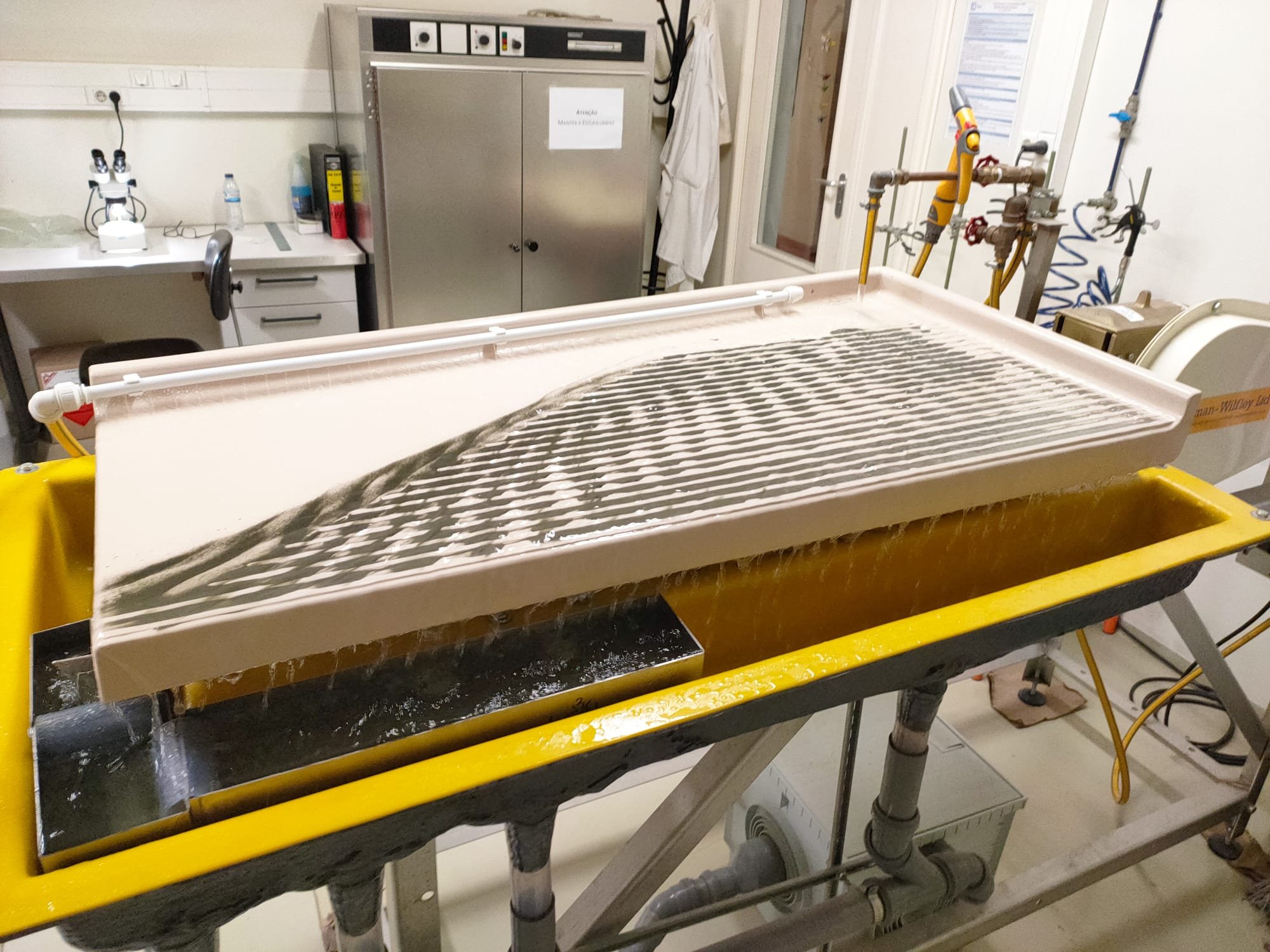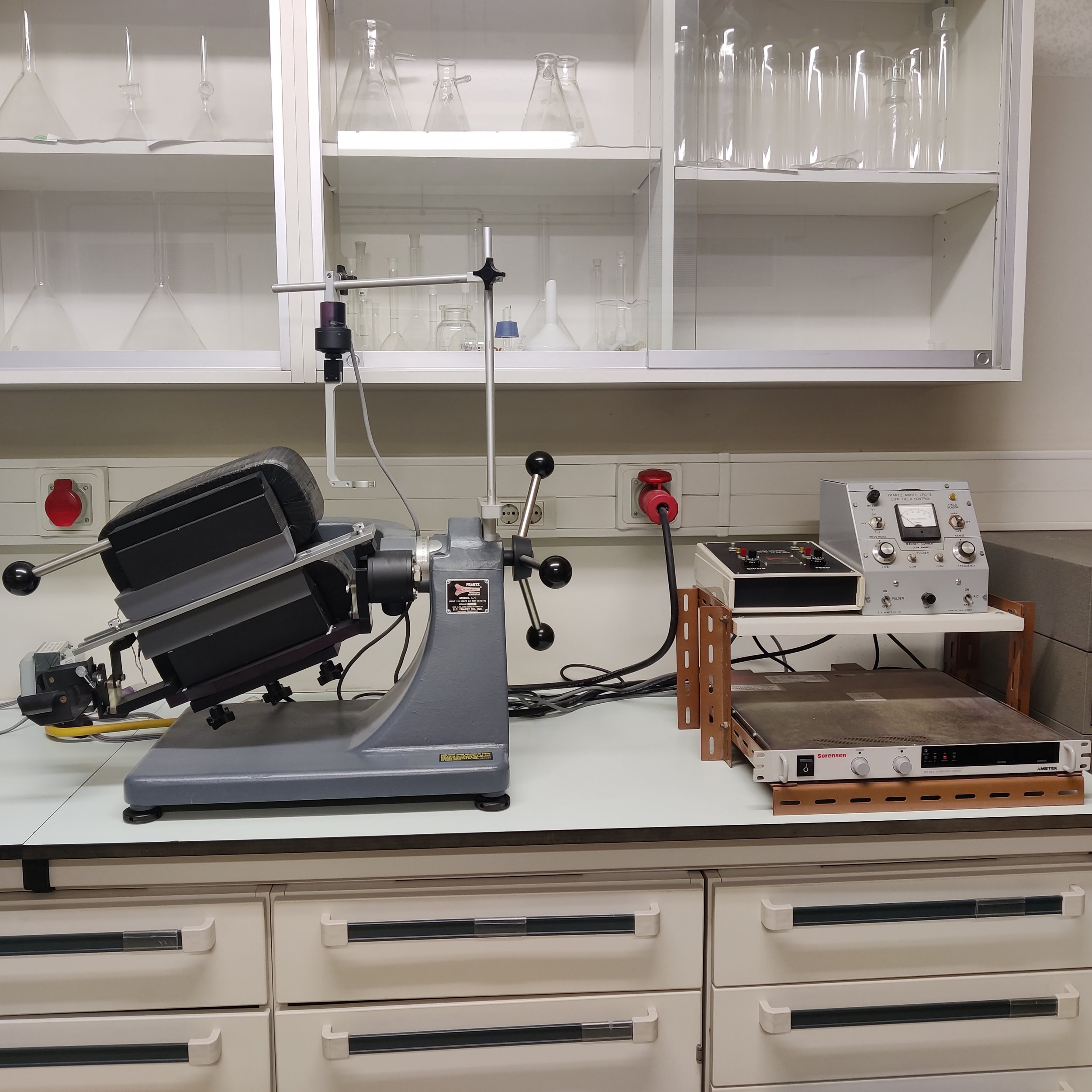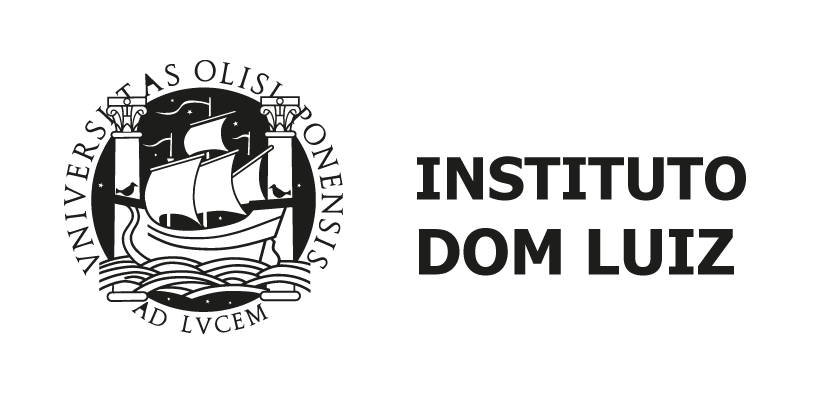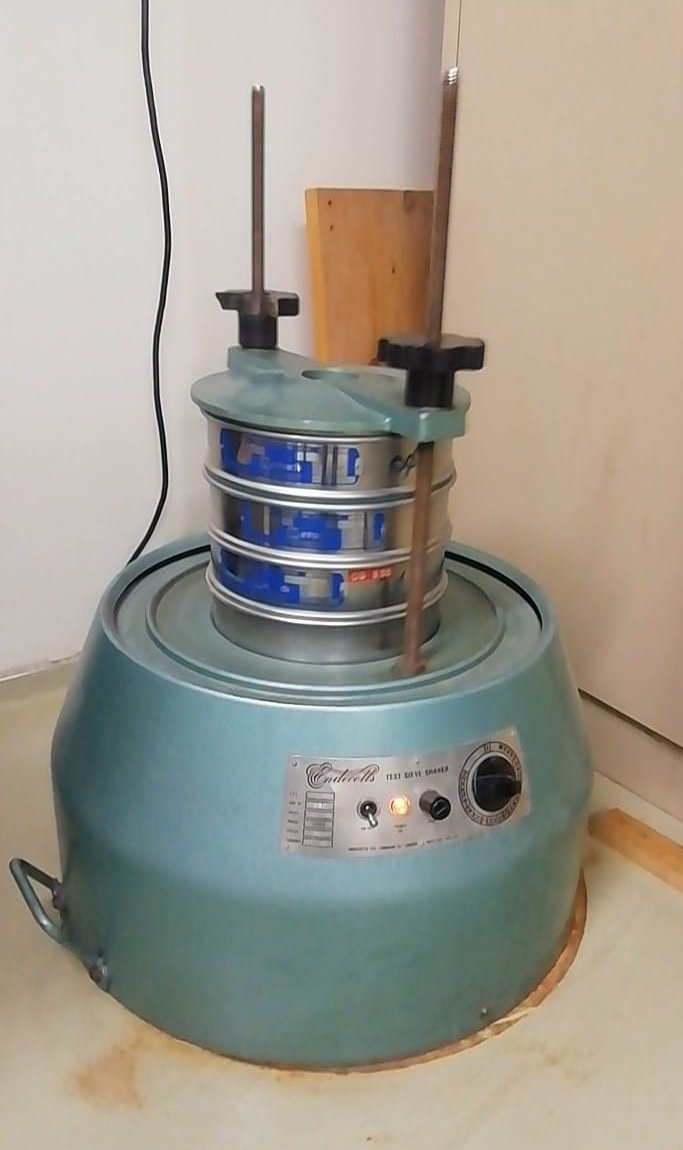Mineral Separation Laboratory (MinSepLab)


Overview
The Mineral Separation Laboratory (MinSepLab) was set up in 2009 as a facility dedicated to providing the adequate support to other lab units involved in Mineralogy and Geochronology studies. Currently, the MinSepLab scientific coordination is assigned to António Mateus, assisted by the chief operator and Lab manager Sofia Rodrigues.
The main activities in MinSepLab involve the separation of mineral phases using physical methods, allowing the production of pure mineral concentrates subsequently used in detailed mineral composition analysis and geochronological studies. The mounts of mineral concentrates produced will feed analytical lines in the EPMA Lab or will be subject to another type of analysis in external laboratories equipped with devices that do not currently exist at FCUL, such as LA-ICP-MS, Raman spectrometry or cathodoluminescence, mass spectrometry (stable and radiogenic isotopic analysis). For geochronology or geothermochronology studies, mineral concentrates produced in the MinSepLab are sent to several other external laboratories, with which we have a long-established scientific collaboration, for multi-system isotopic analysis (U-Pb in Zircon with SHRIMP, TIMS or LA-ICP-MS, Ar-Ar in micas or amphibole, Sm-Nd in garnet, Pb-Pb in sulphides, etc.).
The MinSepLab is, admittedly, a transversal facility, assisting the “baseline work” of all the researchers and students involved in comprehensive mineral chemistry analysis, multi-system isotopic surveys and geochronology studies, particularly those affiliated to the Geology Department of FCUL and the IDL’s RG3 and RG2.
The allocation of work carried out in MinSepLab varies greatly but, according to the track record of lab requests (existing since 2014), 60-70% of the total workload is oriented for fundamental and applied research (supported by research projects or independent service contracts); 25-30% for postgraduate course units (essentially supporting activities carried out by PhD students), and <10% for undergraduate course units.
The RCG average annual costs are low (ca. €0.5k), except for the years in which new equipment was purchased or works were needed for its installation. The MinSepLab is typically funded by ongoing research (national and European) projects.
Infrastructure
The MinSepLab, sited in the FCUL Campus, is part of a series of lab-infrastructures assigned to the basic preparation of geological materials for subsequent studies, which are distributed across the ground floor of the C6 building (Geology Department).
The MinSepLab has one dedicated specialised technician (Sofia Rodrigues) and uses in routine: (i) a Frantz electromagnetic separator Mod. L-1; (ii) a Frantz electromagnetic separator Mod LB-1; and (iii) a Holman-Wilfley Shaking Table (Mod. 800). The latter equipment, purchased in 2015 with funds from C4G, allowed to replace an old, in-house made, column separator supplied with pressed air, greatly improving the production in the MinSepLab.
Currently, the MinSepLab can suitably address a large part of the needs related to mineral separations for a series of studies. Nonetheless, we are plenty aware of the improvements that could be introduced in the future (see below), increasing the performance of this lab facility.
Main highlights
In the last five years, the MinSepLab assisted a high number of research projects and the research activities of many postgraduate students. Confidently, we may state that mineral separations performed at MinSepLab were (and are) on the backstage of dozens of published (or submitted) studies, as well as many MSc and PhD theses. The research activities provided by the equipment located in the MinSepLab, not always formally recognised, end up being determinant, even facilitating the connections with external laboratories where "cutting-edge analyses" are conducted.
According to appointments made in the last 20 months, the MinSepLab was used by 2 MSc students, 3 PhD students, 2 IDL researchers and 1 foreigner researcher.
Future prospects
As it is, the MinSepLab satisfactorily responds to many applications, but is insufficient for increasingly demanding research approaches to the fine characterisation of mineral phases. These approaches, with very diverse implications and applications, cover an increasing number of minerals (forcing the refinement of separation and concentration processes) to obtain accurate determinations: (i) of the minor and trace constituents of an increasing number of mineral phases, which may include very detailed crystallo-chemical studies, and (ii) isotopic ratios for a growing number of stable and radiogenic systems. For this purpose, it will be necessary to expand the MinSepLab by gradually introducing a series of separation conventional procedures (e.g., heavy liquids), followed by other methods, less common in this kind of labs, although useful for separating some specific mineral phases (such as electrostatic, froth flotation, leaching, and electrowinning processes). The introduction of these techniques will certainly increase the scientific relevance of the work carried out at MinSepLab and may even sow the seeds for other studies with social impact. Within the scope of the latter studies, it should be highlighted the increasingly important approaches to the characterisation of: (i) metal contaminants in soils (carried out at the interface between soil mineralogy and environmental geochemistry) and procedures to mitigate them; (ii) mineral components with specific properties that could potentially be used as substitutes for other raw materials; and (iii) processes useful in increasing efficiency levels of the treatment and extraction of critical metals usually constituting mining by-products.
Contact Person
Sofia Rodrigues
Address
FCUL, Campus, C6 Ground floor

